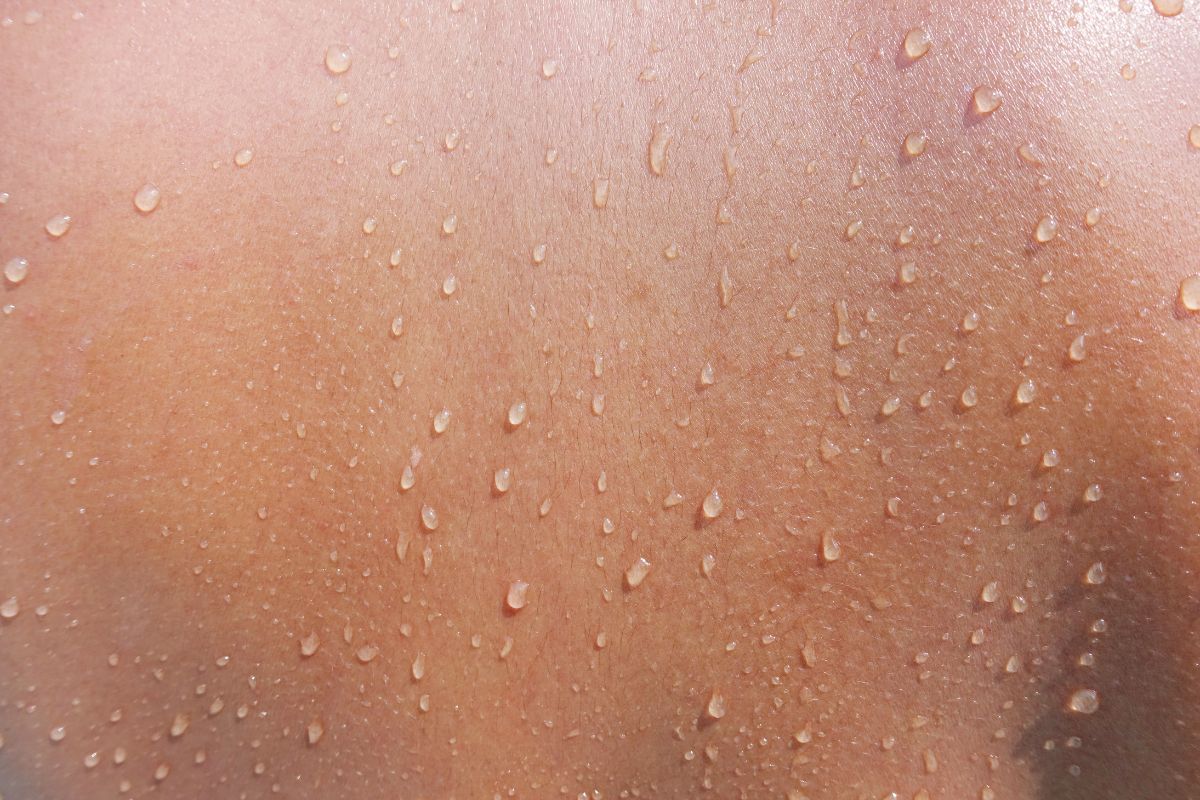What is Hyperhidrosis?
Hyperhidrosis is a chronic autonomic disorder that can be debilitating and lead to emotional and social embarrassment, as well as occupational, physical, and psychological disability. There are many causes of hyperhidrosis but in 90% of people no cause is found. It affects both sides of the body in the underarms, palms, soles, face and less commonly scalp and groin. Many people have a family history of hyperhidrosis which suggests there may be a genetic predisposition.
Primary hyperhidrosis usually starts in adolescence and affects about 1% of the population. Earlier onset hyperhidrosis primarily affects the palms and soles. After puberty the underarm area is more commonly affected. More than half of adults with hyperhidrosis suffer from excessive sweating in the underarm area. Both men and women are equally affected. Some patients can experience hyperhidrosis in multiple areas at once. Secondary hyperhidrosis is less common and can be caused by medication (antidepressants, antibiotics, anti-inflammatories), pregnancy, menopause, alcohol, medical conditions (thyroid, infection, diabetes, cancer), or congenital disorders.
Sweat glands on the forehead, scalp, palms, soles, and underarms are activated mostly by emotional stimuli. Stress and anxiety are common triggers of excessive sweating. Emotional sweating does not occur during sleep. Heat, physical exertion, alcohol, and spicy foods can also exacerbate hyperhidrosis.
Depending on the cause, hyperhidrosis may not go away. Primary hyperhidrosis may improve with age and is less prevalent after 65 years old.
Hyperhidrosis induces a moist environment that can increase the risk of skin infection as well as eczematous conditions. Hyperhidrosis contributes to body odor and can lead to poor posture from trying to conceal perspiration.
In general avoidance of triggers including crowded areas, emotional provocations, alcohol, and spicy foods can be beneficial. Avoiding tight clothing, synthetic fabric, and occlusive shoes may also help.
Hyperhidrosis can be treated with topical or oral medication as well as botulinum toxin (Botox®, Dysport®) injections. Topical agents include aluminum salts and glycopyrrolate. They are only effective in milder cases of hyperhidrosis, can cause skin irritation, and their effect lasts up to 48 hours.
Anticholinergic (oxybutynin, glycopyrrolate) oral medications are more commonly used, but they are limited by side effects such as dizziness, dry mouth, urinary difficulties, and confusion.
Botulinum toxin injections (Botox®, Dysport®) are a very safe and effective treatment for hyperhidrosis. Injections into the skin are thought to inhibit the release of neurochemicals that trigger sweat glands. It is the most studied treatment for hyperhidrosis and has shown reduction in sweat production. Results start to take effect in 2-3 days and reach full effect by 14 days. Effects typically last from six to eight months although in some people it may be shorter or longer. Repeat treatments are required to maintain the effect. The procedure takes less than 30 minutes, and you can resume normal activities immediately afterward.
The most common complaint is pain caused by injections, especially in the palms and soles. Pain can last up to 48 hours after treatment. Topical numbing agents and ice can be used during treatment to minimize pain. Injections in the palms can cause some temporary weakness in the hand muscles reducing your ability to grip. Injections in the forehead and frontal scalp may cause heaviness or drooping of the eyebrows.
Most private insurance companies will cover Botox® and Dysport® for hyperhidrosis of the underarm area. Some will also cover them for excessive sweating of the palms and soles. You should check with your provider regarding what your benefits will cover. There is a fee for injection of the botulinum toxin, which is often not covered by insurance, and must be paid at the time of injection.
Surgery is a last resort for treatment of hyperhidrosis. Sweat glands can be removed from the underarm area but this may lead to scarring and restriction in arm movement. Sympathectomy procedures removes the nerve signal to the sweat glands and can be very effective, but many patients experience worsening of sweating in other non-treated areas.
It is recommended that you do not take any non-essential blood thinning medications (ASA, aspirin, ibuprofen), supplements (fish oil, Vitamin E) or herbal remedies (garlic, ginkgo, dong quai, ginger, turmeric) for 1 week before hyperhidrosis treatment. If you are required to be on any blood thinners for medical reasons you can still undergo treatment but will be at an increased risk of bruising.
Alcohol should be avoided for 48 hours before hyperhidrosis treatment to reduce the chance of bruising.
The International Hyperhidrosis Society provides information through their website SweatHelp.org


